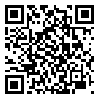Volume 7, Issue 2 (June 2025)
IEEPJ 2025, 7(2): 0-0 |
Back to browse issues page
Download citation:
BibTeX | RIS | EndNote | Medlars | ProCite | Reference Manager | RefWorks
Send citation to:



BibTeX | RIS | EndNote | Medlars | ProCite | Reference Manager | RefWorks
Send citation to:
Mansobi M, Parandin S. (2025). The Mediating Role of Attachment Styles in the Relationship Between Spousal Presence and Emotional Security Among Married Women: A Correlational Study. IEEPJ. 7(2), doi:10.22034/ieepj.2025.7.2.556
URL: http://ieepj.hormozgan.ac.ir/article-1-1063-en.html
URL: http://ieepj.hormozgan.ac.ir/article-1-1063-en.html
1- Department of psychology, IsG.C., Islamic Azad University, Islamabad Gharb, Iran.
2- Department of psychology, IsG.C., Islamic Azad University, Islamabad Gharb, Iran. ,Shima.parandin@iau.ac.ir
2- Department of psychology, IsG.C., Islamic Azad University, Islamabad Gharb, Iran. ,
Abstract: (669 Views)
Objective: This study investigated whether adult attachment styles (anxiety and avoidance) mediate the relationship between perceived spousal presence/availability and emotional security among married women.
Methods: A cross-sectional correlational design was used with 372 married women aged 20–55 in Tehran, selected via multistage sampling from community centers, family clinics, and an online survey. Instruments included the Spousal Presence and Availability Scale (SPAS-8), Experiences in Close Relationships–Short Form (ECR-S12), and the Affective Emotional Security Scale (AESS-10). All measures showed acceptable reliability (α, ω ≥ .79) and construct validity (CFA indices: CFI ≈ .95, RMSEA ≈ .05). Data were analyzed using Pearson correlations, hierarchical regression (controlling for demographics), and mediation analyses with 5000 bootstraps.
Results: Spousal presence correlated strongly with emotional security (r = .62, p < .001). Regression results showed that spousal presence explained 29% of the variance in emotional security (β = .49, p < .001). When attachment anxiety and avoidance were added, the effect of presence decreased (β = .28, p < .001). Both attachment anxiety (β = –.31) and avoidance (β = –.18) significantly predicted lower emotional security. Mediation analyses indicated significant indirect effects through reduced anxiety (ab = .15, 95% CI [.10, .22]) and avoidance (ab = .07, 95% CI [.03, .13]), with partial mediation confirmed (VAF ≈ 40%).
Conclusions: Spousal presence directly enhances emotional security in married women, while reductions in attachment anxiety and avoidance partly explain this effect. Findings highlight the value of couple-based interventions that foster partner responsiveness and attachment security.
Methods: A cross-sectional correlational design was used with 372 married women aged 20–55 in Tehran, selected via multistage sampling from community centers, family clinics, and an online survey. Instruments included the Spousal Presence and Availability Scale (SPAS-8), Experiences in Close Relationships–Short Form (ECR-S12), and the Affective Emotional Security Scale (AESS-10). All measures showed acceptable reliability (α, ω ≥ .79) and construct validity (CFA indices: CFI ≈ .95, RMSEA ≈ .05). Data were analyzed using Pearson correlations, hierarchical regression (controlling for demographics), and mediation analyses with 5000 bootstraps.
Results: Spousal presence correlated strongly with emotional security (r = .62, p < .001). Regression results showed that spousal presence explained 29% of the variance in emotional security (β = .49, p < .001). When attachment anxiety and avoidance were added, the effect of presence decreased (β = .28, p < .001). Both attachment anxiety (β = –.31) and avoidance (β = –.18) significantly predicted lower emotional security. Mediation analyses indicated significant indirect effects through reduced anxiety (ab = .15, 95% CI [.10, .22]) and avoidance (ab = .07, 95% CI [.03, .13]), with partial mediation confirmed (VAF ≈ 40%).
Conclusions: Spousal presence directly enhances emotional security in married women, while reductions in attachment anxiety and avoidance partly explain this effect. Findings highlight the value of couple-based interventions that foster partner responsiveness and attachment security.
Type of Study: Original |
Subject:
Evolutionary Psychology
Received: 2025/01/14 | Accepted: 2025/04/19 | Published: 2025/06/1
Received: 2025/01/14 | Accepted: 2025/04/19 | Published: 2025/06/1
Send email to the article author
| Rights and permissions | |
 |
This work is licensed under a Creative Commons Attribution-NonCommercial 4.0 International License. |







